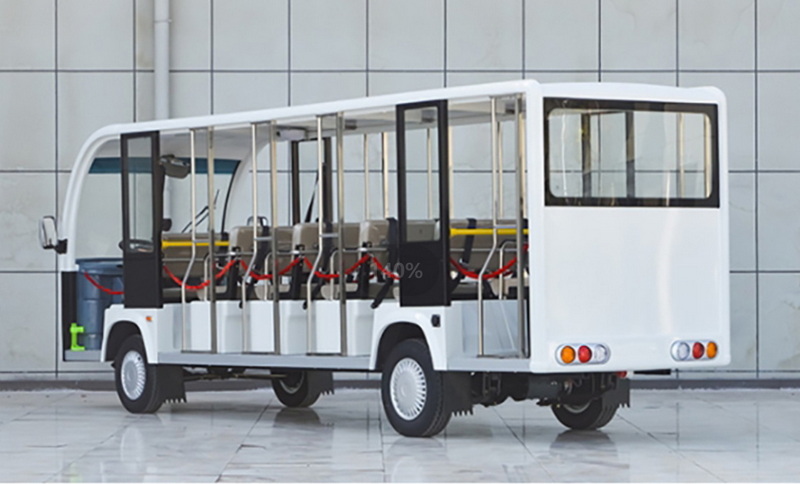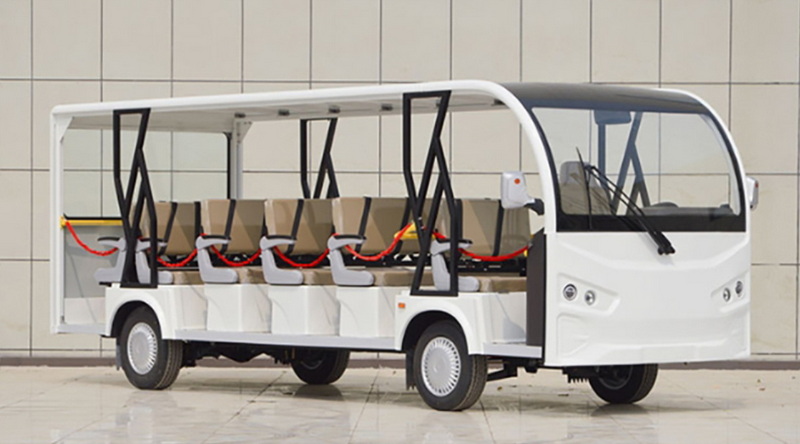Content Menu
● Understanding Production Lead Time in Bulk Orders
>> What Is Production Lead Time?
>> Why Is Lead Time Important?
● Typical Lead Time for Wholesale Electric Sightseeing Buses
>> Standard Production Timeframes
>> Impact of Bulk Order Size
>> Customization and Its Effect on Lead Time
● Key Factors Influencing Production Lead Time
>> 1. Component Availability and Supply Chain
>> 2. Manufacturing Capacity and Scheduling
>> 3. Quality Control and Testing
● The Manufacturing Process of Wholesale Electric Sightseeing Buses
>> Step 1: Order Confirmation and Design Finalization
>> Step 2: Component Procurement
>> Step 3: Frame and Chassis Assembly
>> Step 4: Electrical System Installation
>> Step 5: Interior and Exterior Finishing
>> Step 6: Testing and Quality Assurance
>> Step 7: Packaging and Shipping Preparation
● Practical Tips to Reduce Lead Time When Ordering Wholesale Electric Sightseeing Buses
● Advantages of Buying Wholesale Electric Sightseeing Buses
● Conclusion
● FAQ
>> 1. What is the minimum order quantity for wholesale electric sightseeing buses?
>> 2. Can I customize the design of the electric sightseeing bus?
>> 3. How long does it take to charge the batteries of these buses?
>> 4. Are the components used in these buses imported?
>> 5. What kind of testing is performed before delivery?
Electric sightseeing buses have become a cornerstone for eco-friendly urban transportation, resorts, campuses, and tourist destinations worldwide. Their zero-emission operation, quiet performance, and customizable designs make them ideal for sightseeing tours and shuttle services. For businesses or organizations looking to purchase wholesale electric sightseeing buses in bulk, understanding the production lead time is essential for effective planning, budgeting, and deployment.
In this comprehensive article, we will explore the various factors that influence the production lead time, typical timelines manufacturers follow, the manufacturing process in detail, and practical tips for buyers to ensure a smooth ordering experience. Whether you are a tour operator, resort manager, or transportation planner, this guide will help you navigate the complexities of bulk orders for electric sightseeing buses.

Understanding Production Lead Time in Bulk Orders
What Is Production Lead Time?
Production lead time refers to the total time taken from the moment a purchase order is placed with a manufacturer until the product is fully built, tested, and ready for shipment or delivery. In the context of wholesale electric sightseeing buses, this timeline includes:
- Order confirmation and contract finalization
- Design and customization (if any)
- Procurement of components and raw materials
- Assembly and manufacturing
- Quality assurance and testing
- Preparation for shipment
Why Is Lead Time Important?
Knowing the lead time helps buyers:
- Schedule fleet deployment and operations
- Coordinate financing and budgeting
- Plan marketing or launch events
- Manage customer expectations
A clear understanding of lead time also helps avoid costly delays and ensures that the buses arrive when needed.
Typical Lead Time for Wholesale Electric Sightseeing Buses
Standard Production Timeframes
Most manufacturers of wholesale electric sightseeing buses report a lead time ranging from 7 to 15 working days for standard models when ordered in bulk. This estimate assumes:
- The order quantity is within the manufacturer's monthly production capacity.
- The buses are standard models without extensive customization.
- Components are readily available in inventory or through reliable suppliers.
For example, Dongguan Excar Electric Vehicle Co., Ltd., a leading manufacturer, advertises a delivery time of 7-15 working days for their popular 14-seater electric sightseeing bus model. This rapid turnaround is possible due to streamlined manufacturing processes and established supply chains.
Impact of Bulk Order Size
Bulk orders can range from a few units to several hundred vehicles. While larger orders may benefit from economies of scale, they can also extend lead time if the quantity exceeds the manufacturer's monthly production capacity. For instance:
- An order of 10-50 units may be fulfilled within the standard 7-15 working days.
- Orders exceeding 100 units might require phased production over multiple months.
- Very large orders (300+ units) may need advance scheduling and component procurement.
Manufacturers typically communicate lead times upfront based on order size and production schedules.
Customization and Its Effect on Lead Time
Customization is a common request in wholesale electric sightseeing bus orders. Buyers often want:
- Specific seating layouts (e.g., 12, 14, or 22 seats)
- Custom paint colors and branding
- Upgraded batteries or motors
- Additional features like roof covers, LED lighting, or audio systems
Each customization adds complexity to the production process and may increase lead time by several days or even weeks depending on the extent of modifications. For example, custom battery configurations or imported specialty components can add 5-10 working days.

Key Factors Influencing Production Lead Time
1. Component Availability and Supply Chain
The availability of critical components such as batteries, electric motors, controllers, axles, and chassis parts directly affects lead time. Many manufacturers source parts internationally:
- Batteries: Trojan batteries from the USA or lithium-ion cells from China.
- Controllers: Curtis controllers from the USA.
- Axles: Italian Graziano axles for durability.
- Motors: KDS or other reputable motor brands.
Global supply chain disruptions, shipping delays, or customs clearance issues can impact component availability and extend production time.
2. Manufacturing Capacity and Scheduling
Manufacturers usually have a monthly production capacity, for example, 300 units per month. If your order exceeds this capacity, production may be scheduled over multiple months. Additionally, manufacturers often prioritize orders based on:
- Order size and contract terms
- Customer relationship and payment status
- Seasonal demand fluctuations
Planning your order well in advance and maintaining good communication with the manufacturer helps ensure timely delivery.
3. Quality Control and Testing
Electric sightseeing buses undergo rigorous quality control and testing before shipment. This includes:
- Electrical system checks
- Battery performance and safety tests
- Durability and vibration tests
- Brake and steering system inspections
- Compliance with local safety regulations
Thorough testing ensures reliability and passenger safety but adds to the overall lead time, typically 2-5 working days.
The Manufacturing Process of Wholesale Electric Sightseeing Buses
Understanding the manufacturing process provides insight into why lead times vary and what buyers can expect.
Step 1: Order Confirmation and Design Finalization
Once an order is placed, manufacturers confirm specifications, customization requests, and delivery timelines. If custom designs are requested, engineering teams create detailed drawings and 3D models for approval.
Step 2: Component Procurement
Manufacturers procure raw materials and components based on the finalized order. Established suppliers and inventory stocks help minimize delays.
Step 3: Frame and Chassis Assembly
The bus frame and chassis are assembled first. This includes welding, fitting axles, suspension, and mounting the body shell.
Step 4: Electrical System Installation
Electric motors, controllers, wiring harnesses, and batteries are installed. High-quality components like Curtis controllers and Trojan batteries are integrated carefully to ensure optimal performance.
Step 5: Interior and Exterior Finishing
Seats, handrails, flooring, and other interior components are installed. Exterior painting, branding, and optional features like roof covers or LED lighting are added.
Step 6: Testing and Quality Assurance
The assembled bus undergoes comprehensive testing to ensure all systems function correctly and meet safety standards.
Step 7: Packaging and Shipping Preparation
Finally, the buses are cleaned, inspected, and prepared for shipment. Documentation and export compliance paperwork are completed.
Practical Tips to Reduce Lead Time When Ordering Wholesale Electric Sightseeing Buses
- Plan Ahead: Place orders well in advance, especially for large quantities or peak seasons.
- Standardize Specifications: Choose standard models and components to avoid customization delays.
- Maintain Clear Communication: Regularly update the manufacturer on your requirements and confirm production schedules.
- Consolidate Orders: Group orders to optimize shipping and reduce handling time.
- Verify Component Sources: Confirm with the manufacturer about component availability and potential supply chain risks.
Advantages of Buying Wholesale Electric Sightseeing Buses
- Cost Savings: Bulk purchases usually come with significant discounts.
- Fleet Uniformity: Standardized buses simplify maintenance and operations.
- Eco-Friendly Image: Electric buses reduce carbon footprint and appeal to environmentally conscious customers.
- Customization Options: Ability to tailor buses to specific operational needs.
Conclusion
The production lead time for wholesale electric sightseeing bus orders typically ranges between 7 to 15 working days, depending on factors such as order size, customization, component availability, and manufacturer capacity. Bulk orders are feasible within this timeframe if planned carefully and coordinated with the manufacturer.
Understanding the manufacturing process, supply chain dynamics, and quality assurance procedures helps buyers set realistic expectations and avoid delays. By choosing reputable manufacturers, standardizing specifications, and maintaining clear communication, businesses can ensure timely delivery of their electric sightseeing bus fleets and enjoy the benefits of sustainable, efficient transportation solutions.

FAQ
1. What is the minimum order quantity for wholesale electric sightseeing buses?
Most manufacturers accept orders starting from a single unit, but bulk orders (10 units or more) often qualify for better pricing and priority scheduling.
2. Can I customize the design of the electric sightseeing bus?
Yes, customization is available for seating arrangements, colors, battery types, and additional features. However, customization may extend the production lead time by several days or weeks.
3. How long does it take to charge the batteries of these buses?
Charging time varies by battery type but typically ranges from 8 to 10 hours for lead-acid or lithium-ion batteries.
4. Are the components used in these buses imported?
Yes, many key components such as Curtis controllers (USA), Trojan batteries (USA), and Graziano axles (Italy) are imported to ensure quality and reliability.
5. What kind of testing is performed before delivery?
Manufacturers conduct electrical system tests, safety checks, durability assessments, and compliance verification to ensure the buses meet safety and performance standards.










































